The island of Madagascar, located off the southeastern coast of mainland Africa, offers visitors a unique diverse landscape and is an unknown hiker’s paradise. With over 40 national parks and nature reserves, there is a no shortage of places to explore and hike around this biodiverse island. There are a large array of hiking trails and treks throughout Madagascar, lasting anywhere from a few hours to several days.
This comprehensive guide will outline four of the most unique and accessible national parks for hiking in Madagascar, as well as provide essential information regarding local guides, first-hand experience with multi-day hiking, and tips and tricks along the way.
Ranomafana
This UNESCO World Heritage Site is one of the most beautiful and accessible national parks in Madagascar. The park is located in the southeast region, approximately 390km from the capital city of Antananarivo. In addition to hosting various species of birds and reptiles, this biodiverse 415 sq km park is home to the famous golden bamboo lemur, red-bellied lemur, and the black and white ruffled lemur.

Ranomafana is an excellent introduction to the lush side of Madagascar, with endless secondary tropical forest, rivers, waterfalls, and nearby hot springs to explore There are both half-day treks and multi-day treks in the park, each varying in difficulty. The area is humid and can be wet regardless of season, making for a potentially muddy trek.


Amboditanimena (7km), Talatakely (8km), and Sahamalaotra (7km) are shorter circuits, geared towards day trippers to the park. For the more adventurous, there are some longer routes, including Vatoharanana (12-14km) and Soarano-Valohoaka (11km) that require an overnight camping in the park.
How to Get There
The journey to Ranomafana takes around 8-9 hours from Antananarivo. Heading south along the RN7, the road will pass by various ecosystems and terrains, before turning left onto the RN25.
Andringitra/Tsaranoro Valley
Another UNESCO World Heritage Site, and my all-time favourite park in Madagascar, Andringitra National Park is often the overlooked gem. With over 312 sq km of natural space, the mountainous region of Andringitra is perfect for those seeking a thrilling and remote experience.
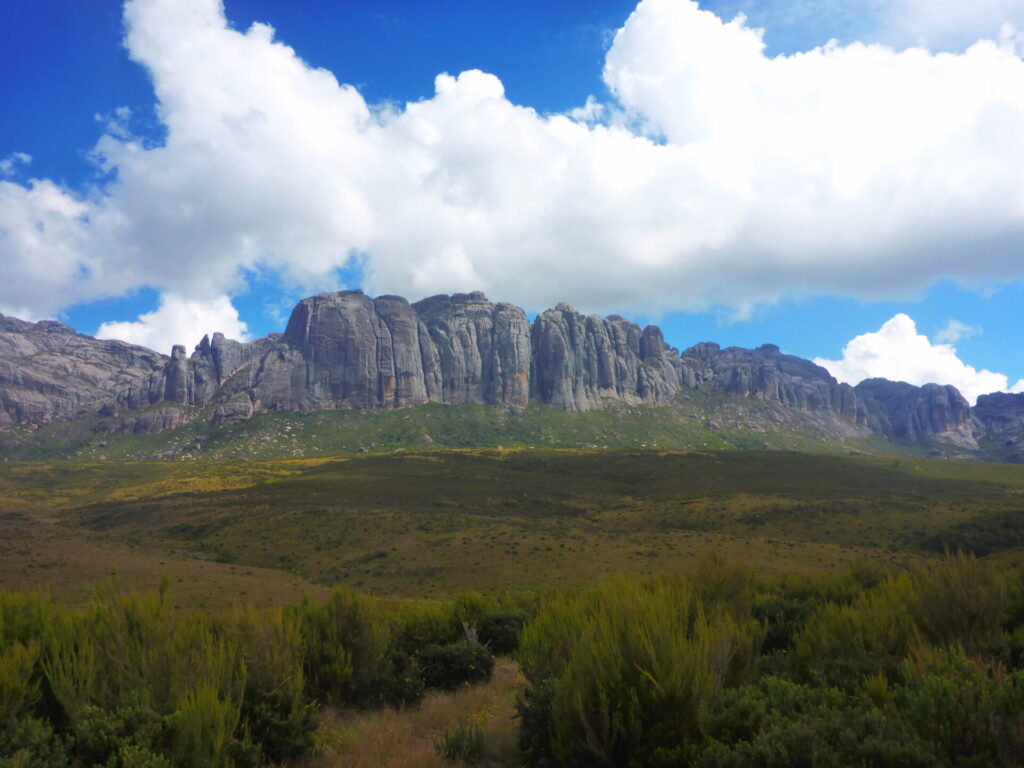
The granite massifs of this national park make it uniquely and visually different from other parks. From tropical lowlands, barren plateaus, and palm trees at 2000m above sea level, Andringitra National Park has plenty to offer in terms of natural beauty.
While it is still possible to view wildlife in the area, such as ring-tailed lemurs and chameleons, the real highlight of a trip to Andringitra is to summit the second tallest mountain in the country, Pic Boby (Imarivolanitra). This multi-day trek is the most popular in the park and can range from 2-4 days.
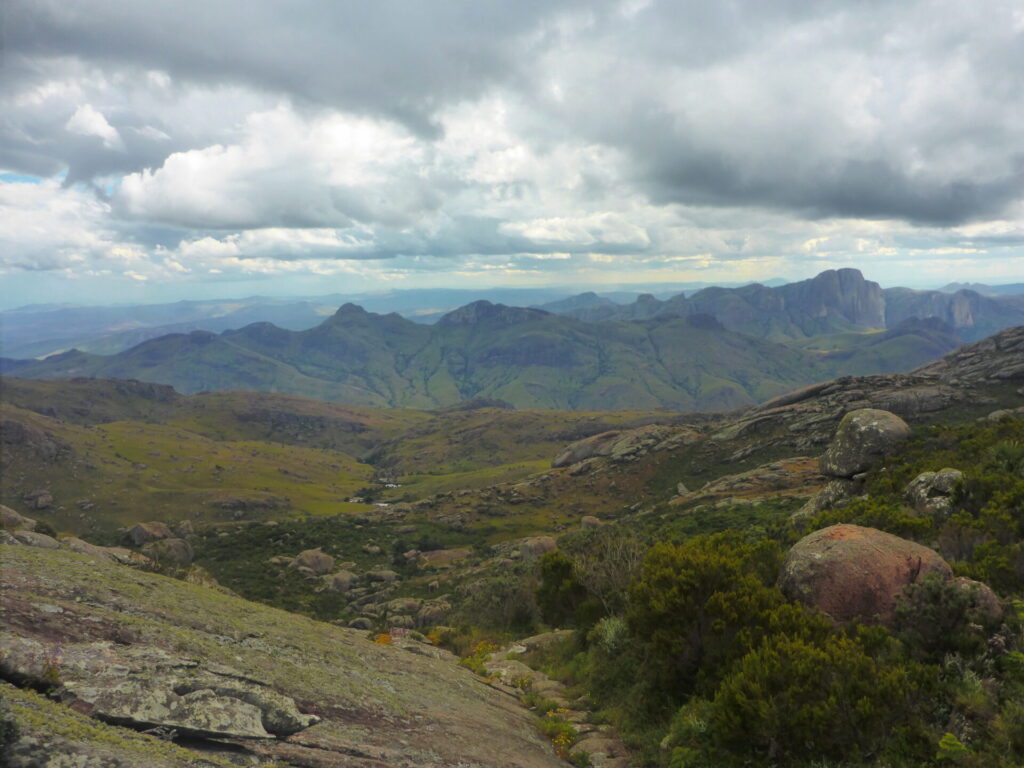
Day hikes available in Andringitra are Isahavato Circuit (15km), Imaitso Circuit (14km), Diavolana Circuit (13km), and Asaramanitra (6km).
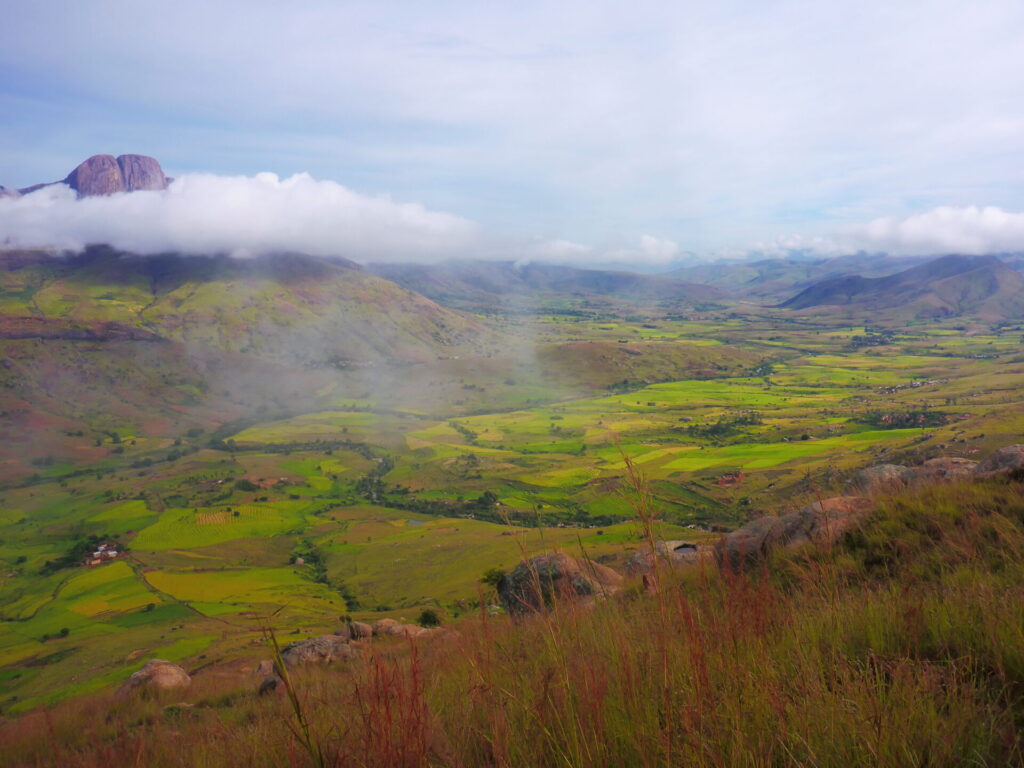
The Tsaranoro Valley/Reserve is on the outskirts of the park and is slightly easier to access. While not as spectacular as the heart of Andringitra, the Tsaranoro offers some beautiful options in terms of day trips around the park barrier, including the Chameleon Track.
How To Get There
The journey to Andringitra National Park is best attempted with a vehicle with off-road capabilities and a lot of patience. The closest city is Ambalavao approximately 40km from the small village of Namoly, the start of the trailhead and park. Unfortunately, this road is not in the best condition and often takes over 2 hours to navigate.
Isalo
Isalo is one of the more popular and visited national parks in Madagascar. This 815 sq km park houses impressive sandstone massifs, hidden canyons, gorges, plateaus, several oases, and plenty of hiking opportunities. Swimming is also possible in Isalo, as it is home to a few natural swimming areas, located deep within the canyons. Most notable are the Black and Blue Pools.

Located in the far southwest of the island, Isalo boasts a dry desert like climate and sees very little rain each year. This is particularly great for those wanting to camp within the park, as the evenings will be warmer than in the highlands.
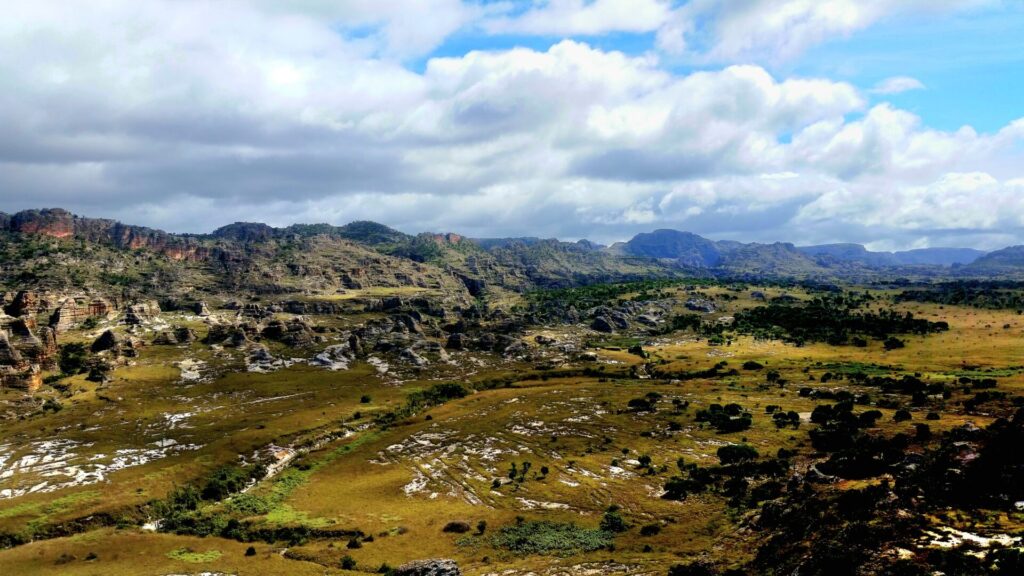
There are several great half day hiking adventures through the park, including Rats and Makis Canyon (2km), Namaza/Piscine Naturelle (3km), Black and Blue Pools and Massif of Isalo. For those wanting to venture further into the park, there is a weeklong multi-day trek called the Grand Tour.

How to Get There
Isalo is located approximately 700km southwest of the capital city. This journey takes over 15 hours along the RN7 road and is advised to be completed over 2-3 days. Toliara is the closest city, located 4.5 hours drive west of Ranohira (the gateway to Isalo).
Andasibe-Mantadia
Andasibe-Mantadia comprises of two protected areas: Mantadia in the north and the Analamazaotra Reserve in the south (known as Andasibe for the nearby village).
These two areas were once connected but have become two separate parks due to the ongoing deforestation concerns in the area. Efforts have been made through various partnerships between the government and environmental organizations to help with replanting of these forests.

Some of the main wildlife attractions within the parks are getting a glimpse of the rare indri lemur and the diademed sifaka. The calls from the indri can be heard in the early morning, so it’s best to plan your hikes during that time.

There are four designated trails in Analamazaotra: Circuit Indri 1 (3.5km), Circuit Indri 2 (4.5km), Circuit Aventure, Palmier Circuit.

Mantadia consists of beautifully preserved primary forest and is seldom visited compared to the south reserve, as it is further away from the main road. Established hiking trails include Circuit Chute Sacree, Circuit Tskoka and Circuit Rianasoa. Multi-day hiking is available in Mantadia, with an option of camping inside the park.
How To Get There
Andasibe is by far the most accessible park on this list, as it’s only a short 3-4 hours drive from Antananarivo. The park can be reached by heading east along the RN2 until you reach Andasibe.
Entry Fees and Guides in the Parks
Every national park and nature reserve in Madagascar has an entrance fee, which can be paid at the park headquarters. If you have joined a private or organized group tour, these entrance fees are usually covered in the total cost. Prices for foreigners are significantly higher than locals.
Each park varies in price but range around 45,000 to 65,000 Malagasy Ariary (MGA), which is around $15-20 CAD.
- Ranomafana: 55,000 MGA
- Andringitra: 45,000 MGA
- Isalo: 65,000 MGA
- Andasibe: 45, 000 MGA
The price for children is standardized throughout these parks and is 25,000 MGA.
Visitors in Madagascar who plan on exploring a national park or nature reserve also need to budget for a local guides, as guides are mandatory in all the parks.
Typical rates for guides can vary and are highly dependent on the route, duration of the hike and how many days you are visiting the park for. Information is hard to find outside of Madagascar for daily rates are not always posted online.
The best resources are to talk to the park headquarters directly, your tour company or visiting the official Parks website.
While not every hike is listed on the website with rates, it gives you a general idea of what to budget for.
Starting Rate Guide Fees
- Ranomafana: 30,000 MGA
- Andringitra: 20,000 MGA
- Isalo: 25,000 MGA
- Andasibe: 20,000 MGA
Tips for your guides, while not mandatory, but highly encouraged, are also something to be budgeted for your visit to any national park.
Local guides are educated and accredited on all the national parks. They provide excellent information and a wealth of knowledge on the flora and fauna and go above and beyond to ensure visitors leave feeling satisfied.
What to Expect on a Day Hike
Day hikes in the national parks of Madagascar can range anywhere from 1 hour to a whole day. Whether you book at the park headquarters or with an online tour agency, the overall experience will generally be the same. Some guides provide more information than others, so it’s a little bit of a lottery when booking at the headquarters.
Your guide will show you through the various established circuits, educating visitors on plants and searching for various creatures like reptiles and lemurs. While it is not guaranteed to find lemurs, guides are very skilled at finding them and ensuring visitors don’t leave disappointed.
The other option for guides is just to act as a hiking buddy for visitors. Some guests (such as myself) are more inclined to just walk and enjoy nature, while learning about the history of the area. Guides are very flexible, so be open about what you want out of the walk with them.
What to Expect for a Multi-day Trek
One of the best ways to explore a national park is to take part in a multi-day trek. This allows you to fully immerse yourself within nature and truly appreciate the beauty it holds. While the idea of a multi-day trek in an underdeveloped country such as Madagascar may be daunting, with a little preparation, patience, and positive attitude, it can be a rewarding and excellent experience.
Multi-day hiking trips in Madagascar can range from 2 to 7 days and are normally all inclusive. Water and three meals a day are provided on multi-day adventures.
Since it’s mandatory for a guide to be hired while visiting a national park in Madagascar, it’s no surprise, additional personal would be needed for a multi-day trek. A typical multi-day trek in Madagascar includes a local guide, several porters, and a cook.
I travelled to Madagascar by myself and was accompanied on my hike by my driver (who was also my cook), local guide, and 6 porters. While the number of porters may seem excessive, it’s good to keep in mind the amount of equipment that needs to be carried over several days.
The general rule is 2 porters per person. Porters have the responsibility of ensuring the camp is set up each night, helping with cooking and carrying all equipment, including the visitor’s bigger luggage.
Sleeping Arrangements
On a multi-day trek through Madagascar’s national parks, camping is the only option. The parks are wild and have basic facilities. Some campsites have access to running water, with showers and running toilets, while others only have drop toilets and river access to wash.


Accommodation while trekking are tents (either provided by yourself or your guide/tour company). Food and water are also brought in by yourself or porters/cook.
Best Season to Go Hiking in Madagascar
Madagascar as two distinct seasons: wet and dry.
The wet, humid, rainy season runs from November to March and has daytime temperatures in the high 20s and 30s degrees (Celsius). While this time of year is warm and the landscapes are lush, the rains make Madagascar’s poor infrastructure and road conditions nearly inaccessible. Regional flooding is common, especially during the cyclone months of January, February, and March.
The dry season begins in April and runs until October. This time of year sees less rain and humidity, while still having pleasant daytime temperatures in the mid to high 20s. During the early months of the dry season between April to June, the rice fields are at their peak and the landscapes still lush from the wet season. This is a particularly lovely time of year to visit for hiking as well, as the highland mountains remain frost free and are warmer in the evening.
The landscapes in the later months of the dry season becomes less colourful and even have a risk of snow in the higher altitudes.
I hiked Madagascar in mid-April and was welcomed to warm temperatures, little rain and a lush landscape. Roads were accessible; however some national parks (Andasibe) were badly impacted by a recent cyclones which caused closed or diverted trails.
Tips/Gear for Hiking in National Parks
- Bring insect repellent
- Wear long layers in the jungles. This will help keep mosquitoes away and keep you dry
- Bring malaria Tablets
- Headlamp for night treks and camping
- Always stay on the designated paths and follow the suggestions from your local guide


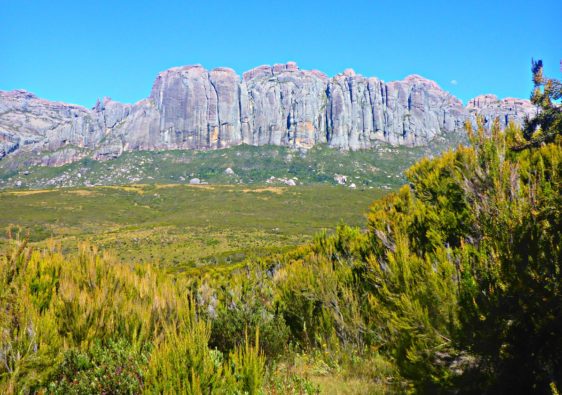
National Parks in Madagascar were not on my bucket list until now. It looks stunning~
I’ve always wanted to visit Madagascar, and this post makes touring the parks seem a lot less daunting! Thanks so much!
This is awesome, I’m so glad I chanced upon this!! I’ve been toying with the idea of Madgascar FOR YEARS, definitely gonna take this as my sign for 2024! 😂😂